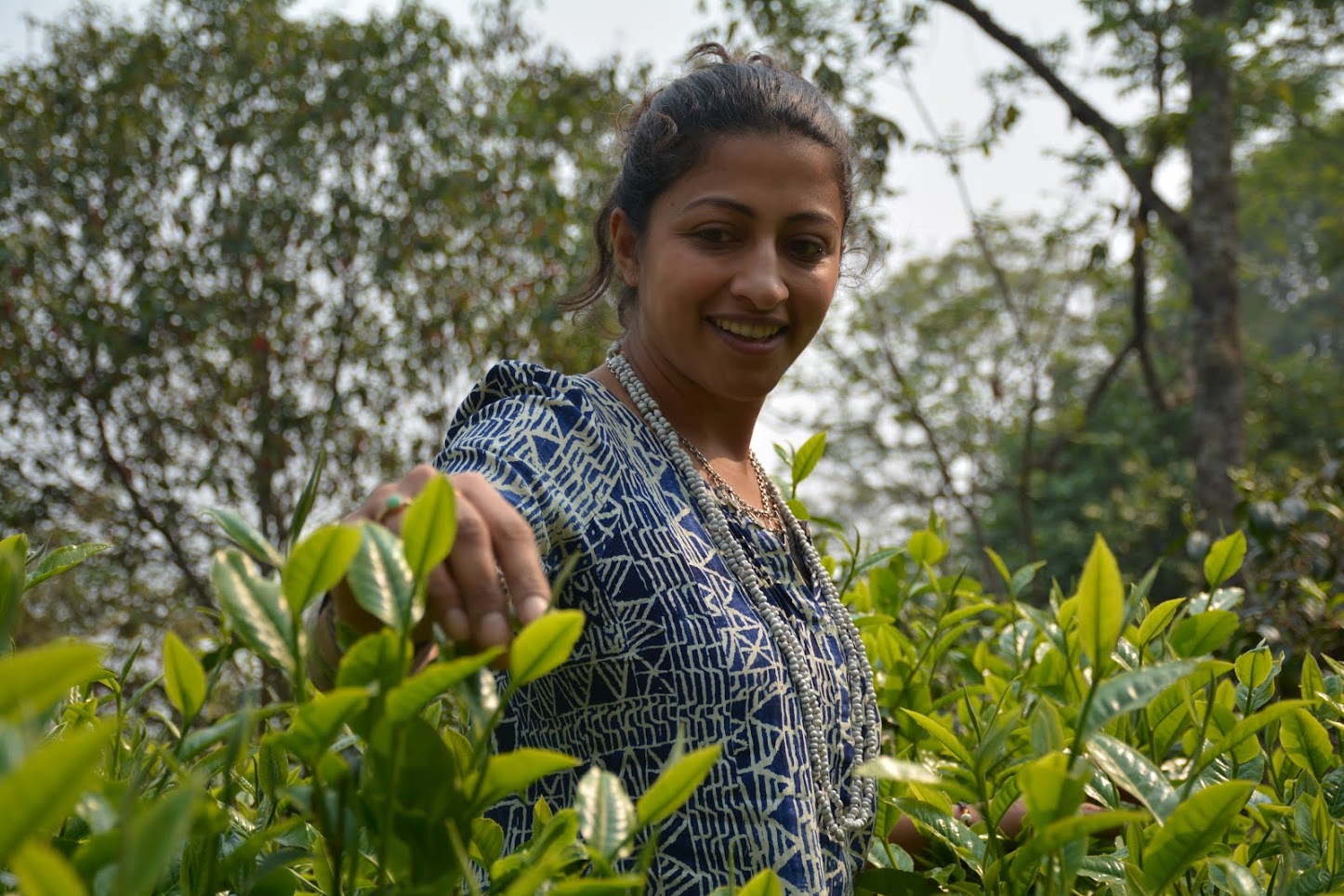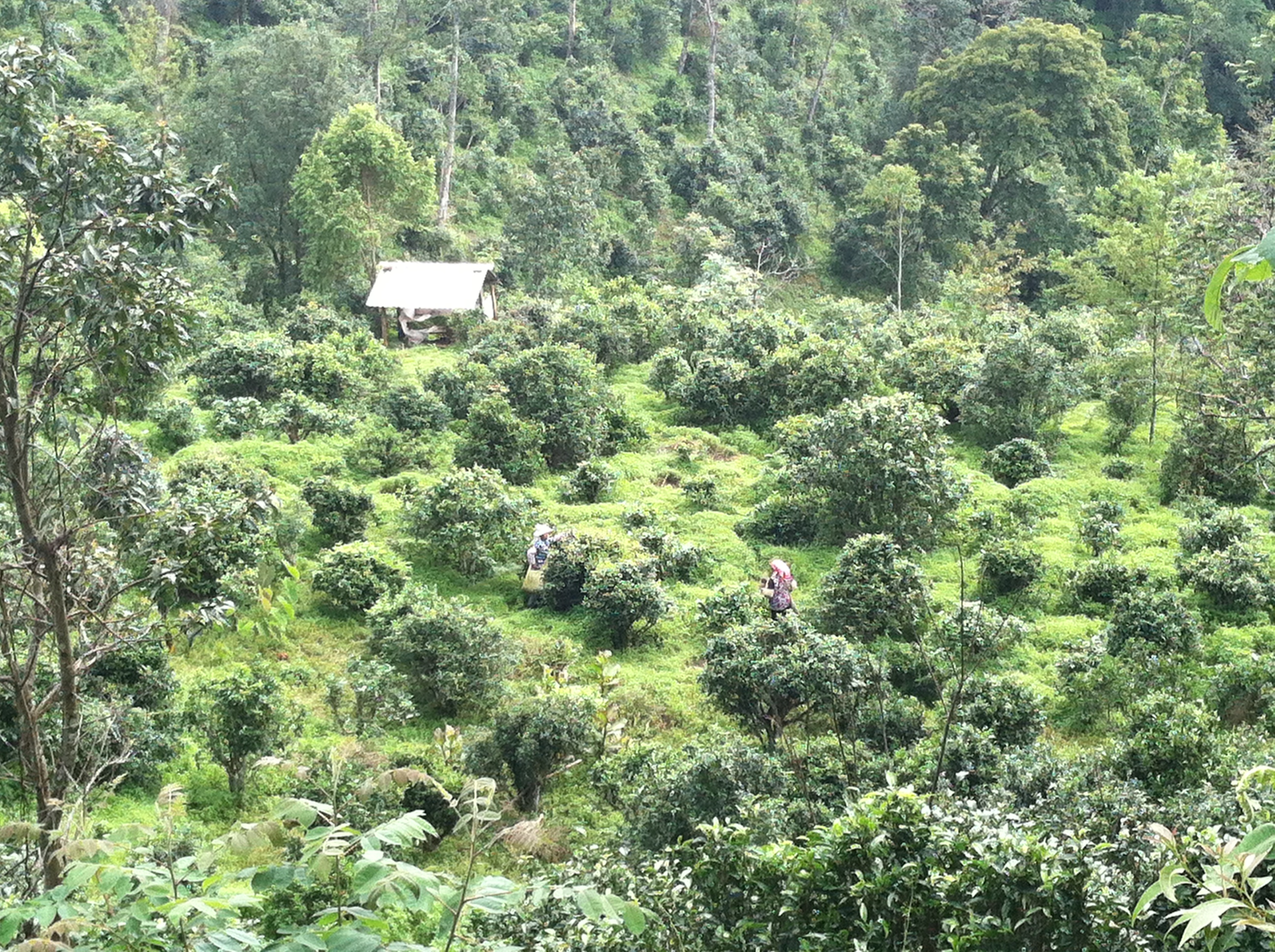Dr. Selena Ahmed is an accomplished scientist, author, and entrepreneur. She is currently an Assistant Professor of Sustainable Food Systems at Montana State University where she leads the Food and Health Lab with Professor Carmen Byker Shanks. The ultimate goal of the Food and Health Lab is to develop strategies for mitigating risk in food systems while fostering biodiversity and sustaining high dietary quality to improve both environmental and human health outcomes. Dr. Ahmed carries out research locally as well as globally with her focal study system being tea farming communities in Yunnan Province of China. Together with photographer Michael Freeman, Dr. Ahmed has published Tea Horse Road: China’s Ancient Trade with Tibet that uses science and imagery to tell a fascinating story of tea culture across regions of Asia. Additionally, Dr. Ahmed is co- founder of the Shoots & Roots Bitters Company which aims to promote biodiversity through research, teaching and the creation of science-based craft bitters that draw from ecology, cultural practices and flavors around the world. Her innovative socio-ecological approach to research on tea and climate change provides invaluable insight on the link between human and natural systems with respect to global change.
Q. Tea x climate change x ecology x culture, what led you to this fascinating area of study? When did you realize that climate change was influencing tea?
Tea farmers in Yunnan Province of southwestern China directed me to my current collaborative project on climate effects on tea quality and socio-economic responses. I began studying the culture and ecology of tea systems in 2006 for my doctoral dissertation through the New York Botanical Garden and City University of New York. Since then, the more research I carry out in this area, the more research questions arise.
Why tea? I am very fascinated by human interactions with the environment. One day while I was brainstorming with my doctoral advisor Dr. Charles (Chuck) Peters at the New York Botanical Garden over a cup of tea, we began to discuss the origin of the tea plant. My doctoral advisor told me about wild tea trees growing deep in the forest of Myanmar. A few months earlier, Louis Putzel, a friend in my doctoral cohort told me about tea agro-forests in Yunnan Province. I was surprised that even though tea is the most consumed beverage in the world after water, there were still research gaps that had global relevance for addressing. It was over that cup of tea with my doctoral advisor that I decided to study the culture and ecology of tea systems in Yunnan. It felt like a soul-mate of a study system to me.
Since my earliest interviews in the tea mountains of Yunnan trying to understand how different environmental and culturalvariables impact tea, farmers have shared how climate is a major driver of tea quality and yields.
Q.What are the tea farmers saying?
Tea farmers that I have interviewed in communities that have a long history of managing tea gardens in Yunnan Province are very aware of changes in climate variables during their lifetimes and perceive these to be impacting dynamics in their tea systems and tea that they harvest. As I mentioned earlier, it was tea farmers directed me to collaborative research on climate effects on tea quality. During my interviews on environmental and management effects on tea systems for my dissertation between 2006-2010, farmers continuously expressed how multiple climate variables were impacting tea quality and the associated income, health benefits and flavor profiles they derived from tea. Since than, tea farmers have continuously noted the multiple effects that climate variables have on their tea systems including on pest pressures, soil quality, solar irradiation, and soil moisture content that ultimately influence tea yield and quality.
Q.Are they making the connection with climate change?
Since starting my most recent collaborative study on climate effects on tea, I have systematically documented farmer perceptions and experiences regarding this topic. At my main study site in Yunnan Province, informants perceive that precipitation patterns have changed during their lifetimes including observations of increased duration, strength, and unpredictability of rains. These tea farmers also perceive that temperatures have increased during their lifetimes with fewer cold days, warmer winters, warmer summers, and less frequent occurrence of frost. Tea farmers in Yunnan are reporting that these changes in climate patterns have impacted their tea agro-ecosystems with earlier spring tea harvests and monsoon tea harvests. The majority of these farmers perceive that precipitation variability impacts tea quality and yields while there is less agreement between farmers on the impacts of temperature variability on tea quality and yields.
The climate and tea quality relationship that these farmers describe can be observed through changes in seasonal tea harvests. It is well acknowledge that tea quality varies during the three seasonal tea harvests with the spring tea harvest being regarded as having the highest quality sensory preferences. In Yunnan, tea farmers perceive this high quality deteriorates with the arrival of the East Asian Monsoon and then revitalizes with the retreat of the monsoon. Farmers, traders and connoisseurs in Yunnan report that tea harvested during the dry spring harvest has stronger aroma, physiological characteristics, and taste that many describe as more bitter and bitter-sweet with a sweet lingering aftertaste at the back of the throat referred to as gaan. In addition to quality, farmers note that precipitation levels are directly related to tea growth with an inverse relationship between growth and quality. In addition to direct effects of precipitation variability on tea quality and yields, farmers are reporting that changes in climate patterns have altered the quantities and types of pests and weeds in and around tea agro-ecosystems including when these emerge.
Q.How do you communicate scientific evidence to small shareholder tea farmers in China that have been growing and harvesting tea for centuries?
While there is strong agreement between farming communities who have been managing tea systems for decades if not centuries, newer tea farmers including migrant workers and land laborers are showing less ecological knowledge of climate effects on tea systems. I am also finding variation in responses depending on geographic location and type of tea system managed. For example, tea farmers at our study sites in eastern China located in a different climatic zone than those in Yunnan Province are reporting different climate observations.
Q.I’m interested in this idea of socio-ecological research. Do you think this approach is essential to helping us understand emerging issues surrounding global change?
I absolutely agree that a socio-ecological research approach is essential to helping us understand emerging issues surrounding global change. Global change is inherently interdisciplinary in nature and requires a coupled natural and human systems approach to understand both social and ecological processes driving and responding to this change and related feedbacks. This calls for both a disciplinary foundation and interdisciplinary approach bringing scientists from different disciplines along with other stakeholders to address societies most pressing issues.
Q.Do you think socio-ecological justice should have a larger international platform? If so, how can we improve existing frameworks?
Social justice work should incorporate the environmental relationships that groups and communities have. This requires fewer silos between organization, disciplines, and governing institutions. This requires more regional action as well as collective action by bringing together different stakeholders.
Q.How is climate change influencing the taste of my tea?
Extreme droughts may be improving the taste of your tea while extreme rainfall may be diluting the flavor of your tea. Tea is experiencing both of these extremes on a more frequent basis with both positive and negative consequences for taste depending on a range of environmental and management factors. Climate is thus not having a linear impact on tea taste – its complex and multidimensional – though we are seeing some trends in our data of our long-term seasonal collections from our NSF CNH Large Interdisciplinary Project. It is expected that we will have a better idea of these trends upon completion of our 5-year sampling across 6 sites over 3 seasons each year.
Q.Is this the first instance of climate change directly affecting the taste of something we consume?
Previous studies provide evidence that climate is changing the secondary metabolites linked to flavor of a range of crops including the most consumed fruits and vegetables in the world as well as specialty crops such as coffee and chocolate. I am currently exploring how climate is impacting the taste of sugar maple through a collaborative project with David Lutz, Toni Lynn Morelli, Joshua Rapp, Ryan Huish, Boris Dufour, and Christina Stinson that is supported by a USGS grant.
Q.Your book “Tea Horse Road: China’s Ancient Trade with Tibet” with renowned photographer Michael Freeman shares remarkable stories that defined generations, cultures, and identities across large regions of Asia through stunning imagery and multiple forms of research. How did you develop the fascinating idea for this book? Describe your collaboration with Michael Freeman.
During my doctoral dissertation studying smallholder tea production in Yunnan, I developed a side project examining traditional tea consumption in the Tibetan Plateau of northern Yunnan. I wanted to more fully understand lives and landscapes experienced through tea and the exchange and consumption of natural resources from distant lands. Cultivation conditions are harsh in the Tibetan Plateau and communities here began to rely on tea from southern Yunnan and Sichuan as a substitute for fruits and vegetables. Thus started what became the oldest tea trade road in the ancient world, also one of the highest trade roads. This trade road provides an ideal backdrop to explore culture and ecology of this biodiverse area, and specifically, through the lens of the world’s most consumed beverage after water. This was my first book and Michael’s 120th plus. It was an honor to work and learn from Michael. He is very dedicated to his practice, ambitious and achieves all of his goals, has an excellent eye, and rich experiences.
Q.Plans for another book?
Michael Freeman and I working on our second book together along with other tea experts on the terroir and life of tea – focusing on all of the environmental and management factors that impact what is in a cup. We are specifically focused on high quality tea, the very finest cups.
Q.What can we do to spread awareness and help your efforts?
We have power as consumers to shape the landscape. Diversity of consumption results in diversity in the landscape. Likewise, discernment of consumption can result in mitigation of risk in the food system. Be mindful in consumption not only of what you buy and where it comes from, but also how it tastes. Learning to discern taste can help us be more aware of the environmental and management conditions under which our food was produced.
Q.What drives you? What is your motivation?
I am motivated by trying to address some of society’s most pressing problems regarding food systems through an evidence-based approach – through research that can be applied to mitigate risk in food systems towards a healthier world.
Q.What has been your biggest challenge throughout your experience studying tea? What have you learned from it?
There are numerous confounding factors that impact the tea system and it can be as challenging trying to untangle these as it is exciting. I have had to learn to be patient as a scientist and untangle a few variables at a time. It has also proven essential to take a multi-pronged approach targeting the same research questions through multiple approaches that may seem redundant but give us more rigorous data. For example, I am validating field sampling through controlled manipulative greenhouse experiments. For sensory work, we are also interviewing multiple groups of consumers in our sensory surveys on tea taste to account for the cultural, physiological and experiential variation between groups.
Q. How has this experience and your research changed you as a person and as a scientist?
I am definitely more careful now not to jump to conclusions after a single experiment and think it is very important to understand how changes in context may change research outcomes.
Q.The UN feeding the world conference expo is coming up this year in Milan, how can we best help farmers and particularly smaller shareholders in developing nations adapt to a changing world?
Research identifying climate-smart food systems and factors that enable their successful implementation are crucial for helping smallholder farmers adapt to a changing world. These research efforts should focus on the impacts of diverse horticultural practices on dietary quality and mitigating the risk of climate change. Previous efforts have largely taken an energy-level approach focusing on yields and calories rather than of quality. High crop quality is essential for mitigating macro- and micro- nutrient deficiencies. In addition, these research efforts need to be supported by policies, investments, and capacity building of smallholder famers to encourage implementation of diverse, resilient food systems.
Q. Everyone loves tea and has some sort of connection to it; do you think it is important to bring science to a level that everyone can understand?
I think it is important for scientists to engage with multiple audiences and to present their work in a way that can be engaging and applicable to these multiple groups. To be effective, this can certainly require creativity. I have found a lot of support for my research on tea from multiple audiences – studying a system with such global relevance is a major factor in this support.
Q.Do scientists need to be more creative going forward?
I try to reach out to diverse audiences in diverse ways. For example, I have been collaborating with two other botanists to provide educational outreach on plants and biodiversity through sensory journeys with bitters. As part of this effort, we have formed a company called Shoots & Roots Bitters. We are a team of three female scientists that promote biodiversity through research, teaching and the creation of science-based craft bitters that draw from ecology, cultural practices and flavors around the world (http://www.shootsandrootsbitters.com). Our main activity through S&R is to provide educational outreach – for example we will be giving a workshop at the World Science Festival (NYC) called “Botany at the Bar” as well as will be doing similar programs with the US Botanic Garden (Washington DC) and Kew Botanical Gardens (London).
Q.What’s next for you and your research?
To continue developing my research and teaching program on links between natural and human systems in the context of global environmental change with a focus on biodiversity, indigenous and innovative food systems, bioactive food components, and dietary quality.












